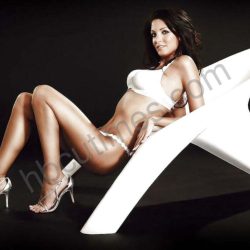Anadolu Yakası’nda eskort hizmeti sunan bayanların buluşma noktasına hoş geldiniz. Burada, en güvenilir ve kaliteli eskortları bir araya getirerek size unutulmaz bir deneyim yaşatmak için bulunuyoruz.
Popülerliği giderek artan escort bayan hizmetleri, Anadolu yakasındaki beyler için özel olarak sunulmaktadır. Bu hizmet sayesinde Anadolu Yakası’nda yaşayan veya çalışan beyler, stresli ve yoğun günlük hayatlarından biraz olsun uzaklaşıp kendilerine özel bir zaman ayırabilirler.
Anadolu Yakası escort hizmetleri, her biri güzellikleriyle ve profesyonellikleriyle öne çıkan kadınlar tarafından sunulmaktadır. Bu kadınlar, müşterilerine unutulmaz bir deneyim yaşatmak ve onların isteklerini karşılamak için ellerinden geleni yapmaktadır. Anadolu Yakası escort bayanlar genellikle bakımlı, kültürlü ve sosyal kişilerdir. Dolayısıyla sadece cinsel hizmet sunmakla kalmazlar, aynı zamanda müşterileriyle iletişim kurarak samimi bir ortam oluştururlar.
Bu escortların genel özellikleri:
- Sizinle güzel bir otel odasında görüşmek isteyebilirler.
- Sürekli görüştüğünüz bir bayan size sevgili tadında bir ilgi gösterebilir.
- Temizlik ve gizlilik esastır.
- Görüşme öncesi size fotoğraf ve fiyat hakkında detaylı bilgi verilir.
- Bu işte uzman oldukları için sizi rahatlatırlar.
İstanbul’un en gözde semtlerinden biri olan Anadolu Yakası, hem turistik noktalarıyla hem de iş ve alışveriş merkezleriyle dikkat çeker. Bu bölgede yaşayan beyler, yoğun tempolarından sıkıldıklarında Anadolu Yakası escort hizmetinden faydalanarak rahatlayabilir, zevk dolu bir gece geçirebilirler. Beylerin tercihlerine ve isteklerine göre farklı hizmet paketleri sunan escort bayanlar, her türden fanteziye ve talebe karşılık verebilecek yetenekte ve tecrübededir.
Anadolu Yakası escort hizmeti, gizlilik, güvenlik ve hijyen konularına son derece önem vererek sunulmaktadır. Müşterilerin memnuniyeti her zaman öncelikli olan escort bayanlar, profesyonel bir hizmet anlayışıyla hareket ederler. Bu sayede beyler, güvenli ve rahat bir şekilde Anadolu Yakası escort hizmetinden yararlanabilir, kendilerine özel bir deneyim yaşama fırsatı bulabilirler.
Anadolu Yakası Escort Bayanlar
Anadolu Yakası’nın her zevke ve tercihe uygun escort bayanları arasından seçim yapabilirsiniz. Profesyonel hizmet anlayışı ve gizlilik prensibiyle çalışan eskortlarımız, size en iyi şekilde hizmet vermek için hazırlar.
Anadolu Yakası escort bayanlar, profesyonel bir hizmet sunmakta olup müşterilerinin gizliliğine son derece önem vermektedirler. Görüşmeler sırasında hijyen kurallarına uyulduğu gibi, müşterilerin istek ve taleplerine de hassasiyetle yaklaşılmaktadır.
Bölgede hizmet veren escort bayanlar genellikle genç, bakımlı ve kültürlü kişilerden oluşmaktadır. Müşterilerine sadece eşlik etmekle kalmayıp, aynı zamanda onlara dinleyici bir dost olmayı da amaçlamaktadırlar. Bu sayede müşteriler, hem stres atıp rahatlayabilirler hem de kendilerini yalnız hissetmezler.
Anadolu Yakası VIP Escort Seçenekleri
Eğer özel bir deneyim arıyorsanız, VIP escort seçeneklerimiz tam size göre. Lüks ve konforu bir arada sunan VIP eskortlarımızla unutulmaz bir gün geçirebilirsiniz.
Anadolu Yakasın’da sunulan VIP escort seçenekleri, özel ve lüks bir deneyim arayan müşteriler için ideal tercihtir. Bu hizmetler, kaliteli ve özenle seçilmiş escortlar tarafından sunulur ve müşterilere unutulmaz bir gün geçirmeleri için en iyi imkanları sağlar.
Anadolu Yakası’nda VIP escort hizmeti almak isteyen müşteriler, genellikle özel ilgi ve lüks bir ortam arayışındadırlar. VIP escortlar, güzellikleri ve bakımlarıyla dikkat çeker ve müşterilerine eksiksiz bir hizmet sunmaya odaklanırlar.
Bu hizmetler genellikle yüksek fiyatlarla sunulur ancak alınan hizmetin kalitesi ve sunulan deneyim bu bedeli hak eder. Anadolu Yakası’nda VIP escort seçenekleri arasında farklı vücut tiplerinden, ten renklerinden ve özelliklerden kadınlar bulunabilir. Müşteriler, kişisel tercihlerine en uygun olanı seçerek unutulmaz bir deneyim yaşama fırsatı bulabilirler.
Anadolu Yakası’ndaki VIP escortlar, güvenilirlik, gizlilik ve profesyonellik konularında titizlikle hareket ederler. Müşteri memnuniyetini ön planda tutan bu eskortlar, sizlere özel ilgi göstererek her türlü isteğinizi karşılamaya çalışırlar.
Sonuç olarak, Anadolu Yakası’nda VIP escort hizmeti almayı düşünen müşteriler için geniş bir seçenek yelpazesi mevcuttur. VIP escortlar, özel taleplerinize uygun şekilde hizmet sunarak unutulmaz bir deneyim yaşamanızı sağlarlar. Eğer kendinizi özel hissetmek ve lüks bir deneyim yaşamak istiyorsanız, Anadolu Yakası’nın VIP escortlarını tercih edebilirsiniz.
Anadolu Yakası escort hizmeti arayan beyler için birkaç farklı yöntem vardır. İşte Anadolu Yakası escort bulma konusunda işinize yarayabilecek bazı ipuçları:
- İnternet Aramaları: Anadolu Yakası escort hizmeti veren ajansların ve bağımsız escort bayanların web sitelerini ve platformlarını araştırarak güvenilir ve kaliteli hizmet sunanları bulabilirsiniz. Bu sitelerden en popüleri şuanda bulunduğunuz sitemizdir.
- Sosyal Medya: Escort bayanların kendilerini tanıttığı sosyal medya platformları da bir arayış seçeneği olabilir. Instagram, Twitter gibi platformlarda #AnadoluYakasıEscort etiketiyle yapılan paylaşımları inceleyerek size uygun olanı seçebilirsiniz.
- Arkadaş Tavsiyeleri: Yakın çevrenizden ya da internet üzerinden güvenilir escort bayanlar konusunda tavsiye alabilirsiniz. Daha önce bu hizmeti alan kişilerin deneyimleri sizin için faydalı olabilir.
- Online Platformlar: Çeşitli escort hizmeti sağlayan online platformlarda filtreleme seçeneklerini kullanarak Anadolu Yakası’nda bulunan escort bayanları listeleyebilir ve tercihlerinize uygun olanı seçebilirsiniz.
- Görüşme Öncesi Detayları Sorun: Anadolu Yakası escort hizmeti almadan önce, görüşme detayları, ücretlendirme, temizlik ve gizlilik kuralları gibi konuları netleştirmek önemlidir. Bu sayede karşılıklı bir anlaşma sağlayarak daha keyifli bir deneyim yaşayabilirsiniz.
Bu ipuçları doğrultusunda, Anadolu Yakası escort hizmeti bulmanız daha kolay olacaktır. Ayrıca, hizmet aldığınız escort bayanlarla iletişim halinde kalarak isteklerinizi net bir şekilde iletebilir ve sağlıklı bir iletişim kurabilirsiniz.
Anadolu Yakası Eskort Fiyatları ve Rezervasyon
Anadolu Yakası eskort fiyatları, genellikle eskortun sunduğu hizmetin niteliğine, süresine ve kişisel tercihlere bağlı olarak belirlenmektedir. Ancak genel olarak saatlik veya gecelik olarak fiyatlandırılmaktadır. Fiyatlar, eskortun tecrübesine, güzelliğine ve sunduğu özel hizmetlere göre değişiklik gösterebilir. Müşteriler, kendilerine en uygun olan eskortu seçerken bu faktörleri göz önünde bulundurmalıdır.
Rezervasyon yapmak için ise çeşitli yöntemler mevcuttur. İlk olarak, eskortların kendi web siteleri veya sosyal medya hesapları üzerinden iletişime geçilerek rezervasyon yapılabilmektedir. Ayrıca eskort ajansları da müşterilere hizmet vermekte ve rezervasyon konusunda destek olmaktadırlar. Müşteriler, rezervasyon yaparken güvenilir ve profesyonel ajansları tercih etmelidirler.
Anadolu Yakası eskortları, müşterilerine keyifli ve unutulmaz bir deneyim sunmaktadır. Ancak bu deneyimin tadını çıkarabilmek için güvenilir ve kaliteli eskortları tercih etmek önemlidir. Anadolu Yakası eskort fiyatları ve rezervasyon konusunda dikkatli olmak, müşterilerin memnuniyetini artıracaktır. Bu nedenle, doğru tercihler yaparak unutulmaz bir deneyim yaşamak mümkün olacaktır.
Gizlilik ve Güvenlik Önlemleri
Müşteri memnuniyetini ve gizliliği ön planda tutuyoruz. Tüm görüşmelerde gizlilik ve güvenlik önlemlerini en üst seviyede sağlıyoruz.










